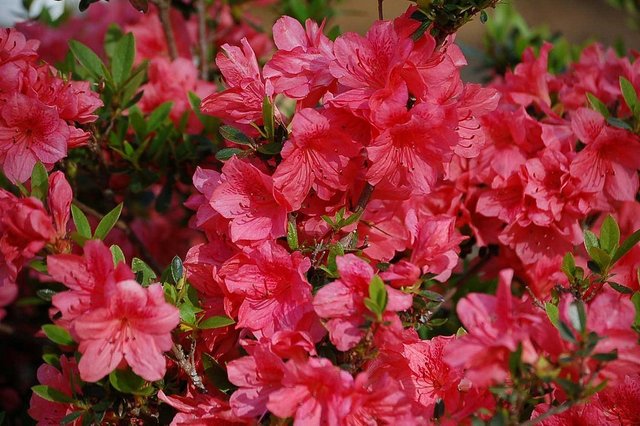Growing Azaleas in the Organic Flower Garden
Gardeners who like flowering shrubs should have at least one azalea bush in the organic flower garden. This rhododendron relative can grow in zone 4.
Gardeners in the south are accustomed to the brilliant punch flowering azaleas add to the landscape, but these hardy shrubs are adaptable in many areas of the country. Learn the organic gardening techniques that make the azalea bush shine in the landscape.

Planting Azaleas
Azaleas can grow in USDA growing zones as low as zone 4, which means that some varieties are hardy to -30 degrees F. However, some azaleas, especially those sold as gift plants at the florist shop aren’t hardy, so gardeners should choose specimens suitable for their growing zone at their local nursery.
Like other shrubs in the Rhododendron genus, azaleas appreciate excellent drainage, an acidic soil pH, and abundant soil humus. Adding organic matter to the soil automatically lowers pH, so organic gardeners can’t add too much compost to the azalea planting site. Pine needles and oak leaves make excellent organic mulch for the azalea bush.
Fertilizing Azaleas
Azaleas don’t need much fertilizer to produce their show-stopping spring blossom display. Instead of wasting money on excessive fertilizers, organic gardeners can feed azaleas and improve the soil simultaneously by combining 4 cups of spent coffee grounds with a cup of bone meal. Water azalea bushes every other week with manure tea for dark green leaves during the growing season.
Pruning Azaleas
The best time to prune azaleas is right after flowering occurs, to avoid damaging flower buds for the next season. Gardeners should prune not only to shape plants but to improve the plant’s vigor: thinning the bush’s interior allows sunlight and air into the plant, which prevents disease.Rather than prune an azalea to check its growth, gardeners should choose species whose mature size fits the site. Azaleas can vary from approximately 12 inches in size to 20 feet or more.
Azalea Diseases and Insect Pests
Azaleas are most commonly affected by root rot and other fungal diseases when the shrubs are planted in areas with poor drainage. Azaleas have shallow root systems, so if the shrubs show signs of wilted leaves or branch dieback, the gardener can relocate the plant to a site with better drainage. In regions with heavy clay soil a raised bed may be the key to successful azaleas.Thrips, whiteflies, and lace bugs are common azalea insect pests. Insect soap can control thrip and lace bug populations. Horticultural oil and pyrethrins stop the whitefly pest, which can transmit black sooty mold to azaleas. Organic gardeners can encourage spiders as natural predators by planting azaleas in a partly shady, sheltered part of the garden.
Source: